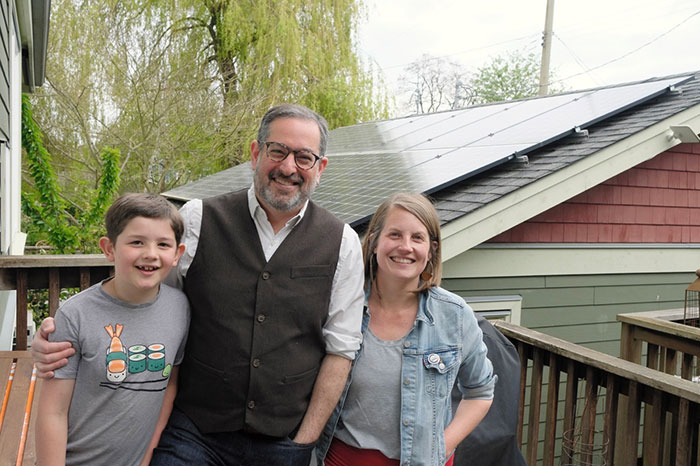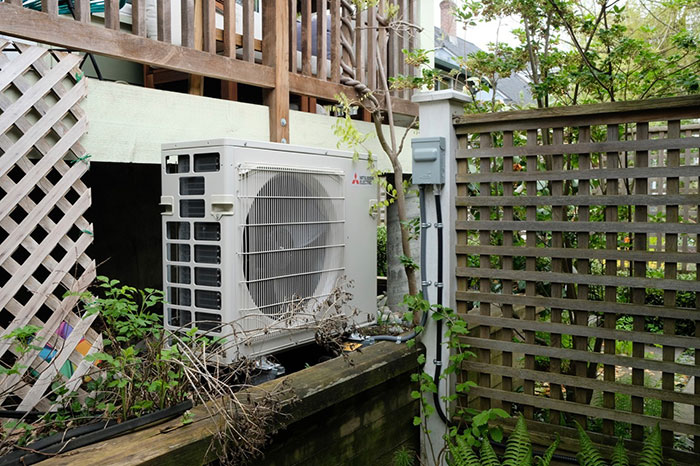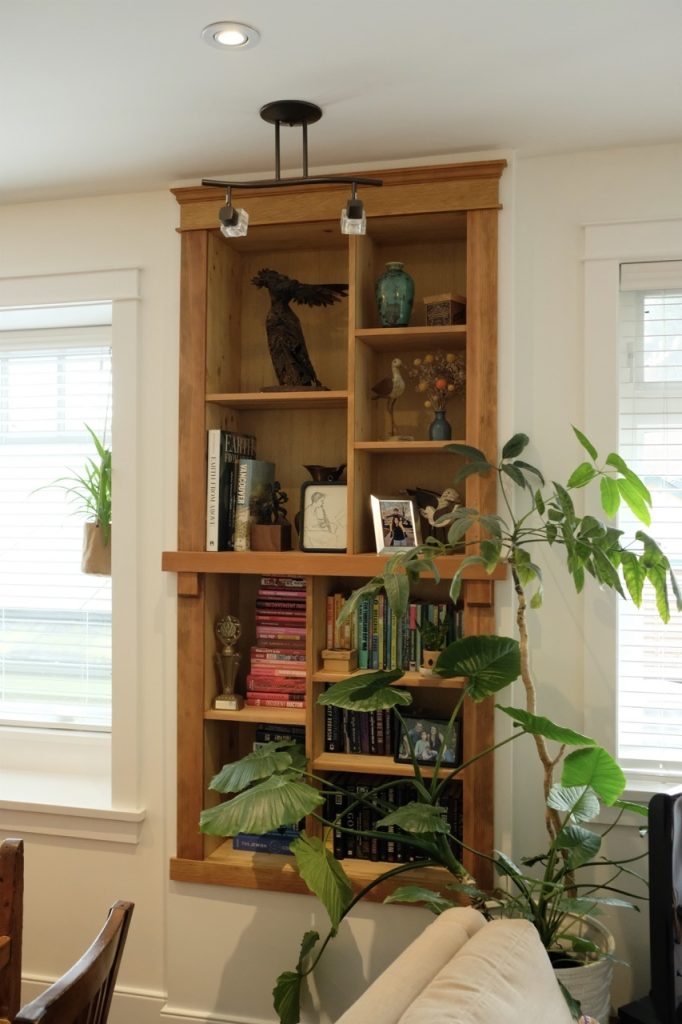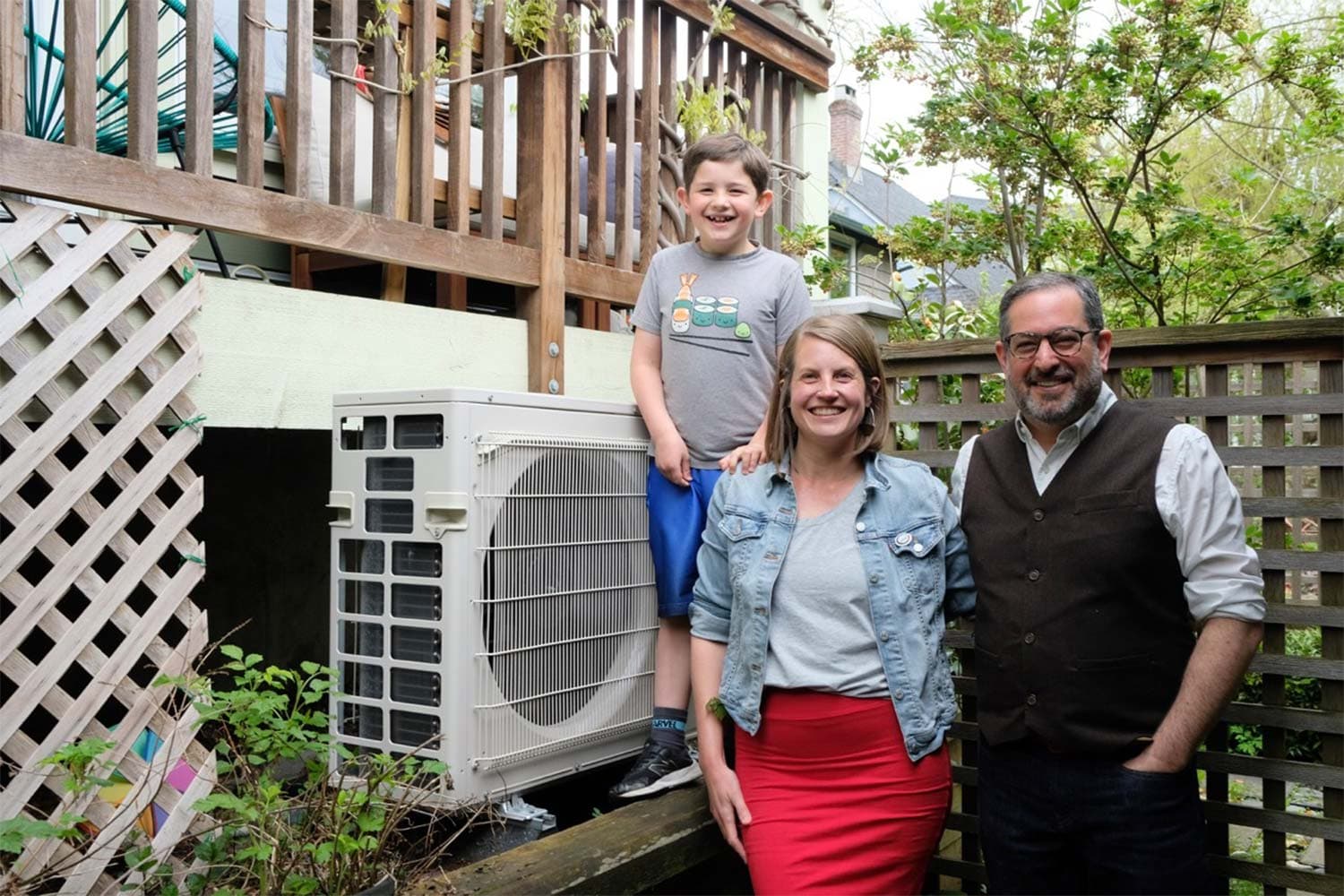Their Home Was a Gas Guzzler. Not Anymore.
How these climate activists got the gas out of their home.
The Klein-Boyle family’s new heat pump was a blessing during the 2021 BC heat dome. It also keeps them warm during winter — all while being incredibly energy efficient.
When Christine Boyle and Seth Klein purchased their Vancouver home, they had a problem. Although the 13-year-old house was well insulated and energy efficient, it was a gas guzzler. Many of the major appliances — the furnace, water heater, and stove — ran on gas, and there was a gas fireplace to boot.
Many people wouldn’t see the issue, but Boyle and Klein are both climate activists. Klein is a policy researcher, speaker, and author of the 2020 book A Good War: Mobilizing Canada for the Climate Emergency. Boyle is a Vancouver city councillor who has championed some of Canada’s most progressive climate policies — including the Vancouver Climate Emergency Action Plan.
Both have spent years pushing for policies to reduce Canada’s carbon emissions — including those aimed at transitioning homes and buildings off of natural gas. So it was only a matter of time before they tackled the emissions from their own home.
Finally, after years of research and planning, the couple went for it. They ripped out every gas appliance, replaced them with electric ones, and installed solar panels. It was a move some would consider extreme, but to them it was a no-brainer.
We wanted to get our own house in order and learn from that to inform how we advocate for larger scale changes.
“It was important for us [to do this] for both climate and health reasons,” says Boyle. “We know that burning natural gas is a significant source of greenhouse gas emissions. And alongside the system-level advocacy and social movement work that we both do on climate, we wanted to get our own house in order and learn what we could from that process to inform how we advocate for and support larger scale changes on that front.”
The work began in the summer of 2019, when the couple had 14 solar panels installed on the garage roof. Since most of BC’s electricity comes from hydro, they knew the solar wouldn’t necessarily reduce their greenhouse gas (GHG) emissions, but they would offset the increase in electricity use once all the gas appliances were replaced with electric.

“It was more preemptive to try to keep our electricity bills down in anticipation of the switch,” says Klein. “There’s no doubt that our electricity bill would have gone up a fair bit if we hadn’t done the solar panels.”
Their electricity use does increase in the winter when the heat pump is running and there’s less sunshine, but in the summer the solar panels produce more energy than the home consumes. This excess electricity feeds the grid and earns the household credits — which they can use in the winter months. Without gas bills to pay, their home’s operating costs have actually gone down.
When it came to swapping appliances, the gas range was the first to go. Besides reducing GHG emissions, getting rid of it meant improving the home’s indoor air quality — which, with two kids at home, was top of mind.
“The increasing number of studies about [poor] air quality because of burning fossil fuels [indoors] is incredibly alarming to me as a parent,” says Boyle.
Gas stoves emit nitrogen dioxide (NO₂), a gas that can cause respiratory symptoms, particularly in children with asthma. Research has shown that homes with gas stoves can have twice the NO₂ as those with electric ones. Burning gas also produces carbon monoxide (CO). Even low levels of CO (below the amount that sets off an alarm) can cause fatigue and are harmful to people with underlying medical conditions.
Because only the cookware gets hot — not the stovetop — an induction range creates less risk of burns or fires, and the surface is easier to clean.
Gas stoves also emit twice the particulate matter — a combination of solid particles and aerosols produced both by fuel combustion and cooking food — as electric stoves. According to the World Health Organization, chronic exposure to particulate matter increases the risk of developing cardiovascular and respiratory diseases, including lung cancer.
The couple switched to an induction stove, which cost about C$2,000 (about US$1550). With induction technology, copper coils under the cooktop create a magnetic charge that heats cookware directly. Because only the cookware gets hot — not the stovetop — there is less risk of burns or fires, and the surface is easier to clean. It’s also super-efficient because no heat is lost around the element: all the thermal energy goes directly to the cookware.
“I really love mentioning that we’re cooking with physics,” says Boyle.

Boyle and Klein cook a lot, and they rave about their induction stove. They love that it’s instantaneous, easy to clean, and much safer — they don’t have to worry about their kids accidentally touching a hot stovetop.
“I want my kids to be comfortable and able to help cook,” says Boyle, “and moving from gas to induction made me feel a lot safer about having the kids involved and helping out in the kitchen.”
The next appliance to go was the one that used the most gas: the furnace. Home heating is the biggest use of energy in Canadian homes, and more than half of homes are heated with natural gas. In 2018, space heating was responsible for 43.3 metric megatonnes of CO2 emissions.
The couple considered an air-to-water heat pump system that would heat their existing radiant floors. Tempting as it was to keep the cozy floors, that option wouldn’t provide cooling. So they opted instead for an air-source heat pump.
An air-source heat pump draws heat from one place and “pumps” it to another. To cool a home, a heat pump works like a conventional air conditioner; a fan on an indoor unit blows air over evaporator coils, which contain a refrigerant — a substance that absorbs heat from the environment. Heat is transferred from the air to the refrigerant, cooling your space.
A heat pump doesn’t generate heat — it just moves it around — so the technology is incredibly efficient.
The refrigerant is then pumped to an outdoor unit, where the heat is released. To heat a home, the system runs in reverse; the outdoor unit extracts heat from the air (even in winter), and heated refrigerant is pumped inside. A fan on the indoor unit blows air over the evaporator coils, releasing the heat into your home. Because a heat pump doesn’t generate heat — it just moves it around — the technology is incredibly efficient.
Heat pumps come in ducted models — which blast warm or cool air through ductwork — or ductless systems, with individual units in each room. Since the home didn’t have ductwork, they opted for a ductless system, with one unit on the main floor and one in each bedroom.

The system was costly (C$17,000 plus tax) but they took advantage of provincial rebates, which amounted to C$9,000, bringing the cost down to C$8,000. (Since they made the switch in 2020, the province of BC has introduced a further C$3,000 in rebates for those switching from natural gas, oil, or propane to heat pumps, and the federal government has introduced a Greener Homes Grant with an additional C$5,600 in incentives.)
The decision proved wise: no sooner had they installed the heat pump, than Vancouver experienced a deadly heat dome. They’d never had an air conditioner — and neither did anyone they know — so they had a lot of visitors coming over to cool down.
Boyle says the heat dome prompted a big demand for heat pumps. And it showed that this technology is not only critical to reducing emissions — it’s key to adapting to the impacts of climate change. Whereas Vancouver hasn’t historically had high temperatures, extreme weather events like this will become more common — and the option to cool spaces is becoming more important.
Heat-pump technology is not only critical to reducing emissions, it’s key to adapting to the impacts of climate change.
“It’s a big piece of capital investment that we’re making as a city,” says Boyle, “to install heat pumps at public facilities, libraries, and community centers so that more of those places can also be cooling centers for more members of the public.”
In the winter, the heat pump keeps their family nice and toasty, and they have no need for a gas backup system. “Even during the cold snap this winter, our system had no problem keeping us warm.”
The next swap was the water heater. In Canadian homes, water heating is the second-biggest use of energy. Canadians use an average of 75 litres of hot water a day. In Canada, water heating is responsible for 21% of residential GHG emissions.
Although the couple could have switched to a heat pump water heater — which is the most energy efficient option — they went with a conventional electric water heater, which cost C$3,400 plus tax including installation.
“We have a mid-size hot water tank that’s heated with conventional electricity, and the cost of operating that has not been that high,” says Klein. “We don’t use a lot of hot water. We don’t use a dishwasher, and we wash our clothes in cold water, so that hasn’t been a big cost.”

The final step was getting rid of the gas fireplace. They rarely used it anyway, and it was one of the areas the home was losing the most heat through air leakage.
“We had a friend who’s a carpenter take out the gas fireplace and build a really beautiful, built-in bookshelf there instead,” says Boyle. “And then we canceled the gas entirely.”
Boyle says that besides shrinking their carbon footprint, the process has sparked meaningful conversations with their kids around climate change — and most importantly, solutions. The 7 year old and the teenager are equally as happy to get the gas out of their home.
Klein says that while some people keep the gas stove or use a gas furnace as a backup, he wanted to cut the gas line entirely.
“I just wanted the joy of turning the actual wrench and contacting Fortis and telling them to close our account.”
